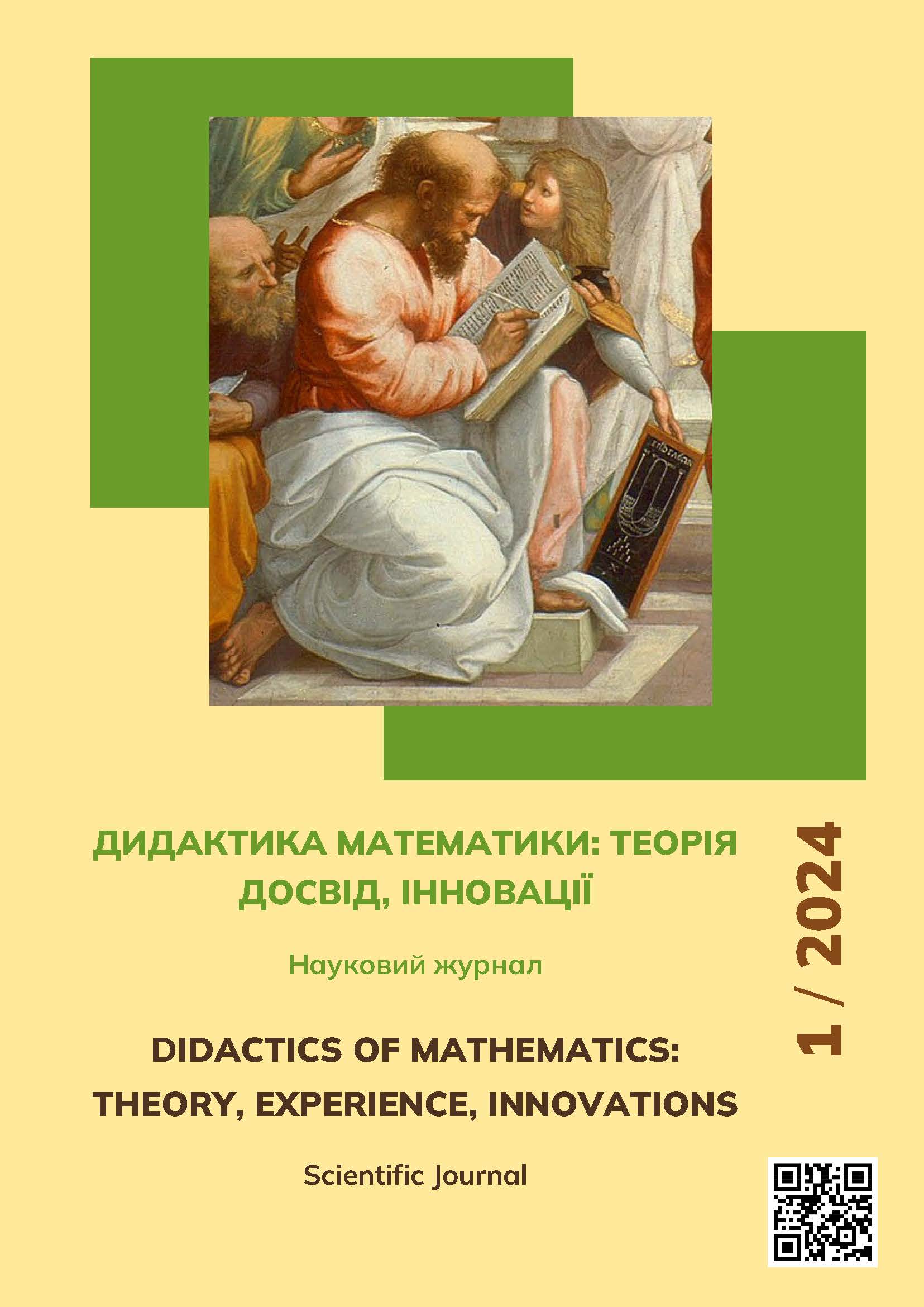Application of QR codes as a tool for involving students in the process of teaching mathematics in basic secondary school
https://doi.org/10.31652/3041-2277-2024-1-63-71Published 2024-08-06
Keywords
- QR code, teaching mathematics, digital resources
Copyright (c) 2024 Olena Volianska, V. Ivanko

This work is licensed under a Creative Commons Attribution 4.0 International License.
How to Cite
Abstract
The concept of QR code is considered, the advantages of their use in education are indicated, and examples of their use in mathematics education are given. A QR code (Quick Response Code) is a two-dimensional barcode that can contain any information, such as a link to a website, video, presentation, or interactive exercise. The article deals with the use of QR codes as a tool for engaging students in the process of learning mathematics in basic secondary school. The question was considered: How can QR codes be used to increase motivation for learning mathematics? What types of digital resources can be used with QR codes in mathematics education? What interactive learning materials can be created using QR codes? The theoretical basis of their use was considered and own methods of using QR codes in teaching mathematics were developed. The literature presents a number of studies that analyze the experience of using QR codes in teaching mathematics in other countries, these studies show their effectiveness for teaching mathematics. It was concluded that the use of QR codes helps to make mathematics lessons more interesting, conduct quests, use various games, quizzes, conduct surveys and test knowledge through testing, use interesting educational videos for a better understanding of what was learned in the lesson. The use of QR codes activates the educational and cognitive activities of students of all ages, increases motivation and interest in mathematics, improves the educational process, helps teach and educate the new generation in the modern information environment.
Downloads
References
- Oğuz, S., & Yılmaz, Y. (2019). The effect of QR code-based interactive exercises on mathematics achievement. Journal of Education and Training Studies, 7(7), 204-210.
- Wong, C. Y., & Tan, K. Y. (2020). The effects of QR code-based mathematics quests on students' motivation and engagement. International Journal of Information and Education Technology, 10(4), 334-340.
- Clarridge, J., & Miller, J. (2020). The effects of QR code-based mathematics games on student understanding. Journal of Educational Technology Research and Development, 68(2), 239-252.
- Гаврилюк О. В. (2022). Цифрові технології в освіті. Київ : Вид. дім "АДЕФ-Україна".
- Коваленко Н. В. (2021). Викладання математики в умовах цифровізації освіти. Київ : "Літера".
- Слюсаренко О. В. (2020). Цифрові технології в освіті: Методика використання. Київ : "Акад.".
- Волкова, А. О. (2022). Використання QR-кодів у навчанні математики. Інформатика в школі, 1(21), 11-14.
- Мерзляк А., Полонський В., Якір М. (2023). Математика 6 клас. Харків : "Гімназія". 208 с.
- Мерзляк А., Полонський В., Якір М. (2022). Математика 5 клас. Харків : "Гімназія". 351 с.
